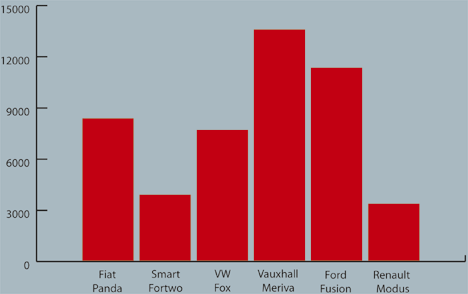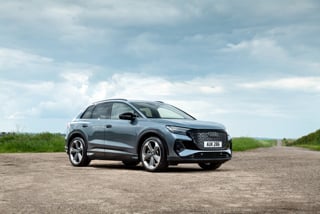However, what makes the car industry so interesting is cars which have no immediate appeal yet do good business.
All the Mini tells us is that if you make a great product with a great badge and great marketing it will do well – but we kind of knew that already.
Take two cars that top no-one’s list of desirable motors (probably not even that of their owners) – the VW Fox and Ford Fusion.
The Fox, which is a pretty bland utility box from Brazil has shifted more than 7,700 units so far this year, just a few hundred behind the far more imaginative Fiat Panda, and ahead of competitors like the Kia Picanto and Chevrolet Matiz. More importantly, it is selling much more than the VW Lupo ever managed.
Given that it also has catastrophic CO2 figures (144 g/km – more than a BMW 318i), you have to ask: “How is it managing it?”.
It seems that the VW brand carries enough weight that people like the idea of a small, affordable Volkswagen. The Fox is surprisingly cheap for VW, which its advertising constantly emphasis.
However, it is hard to imagine anyone else making a success of such a bland product, so for more generally applicable rules, we need to look elsewhere.
The Ford Fusion was greeted with widespread derision at launch.
At a time when Ford was playing safe with styling, this was so safe it was actually dangerous.
Yet the Fusion has sold more than 11,000 units this year, only 2,000 behind the Vauxhall Meriva, the car that originally seemed likely to eat it for breakfast.
So what happened? Ford stumbled across the fact the Fusion did actually have quite a good target market.
It is short, tall and square which makes it an excellent product for the parents (and sometimes grandparents).
Both models show that it is not always necessary to be funkier than the competition, so long as there is still a strong reason to buy the product.
Of course this is not always possible, as Ford itself has found.
The C-Max five-seat MPV is such a strange contradiction in terms that it is hard to see where its appeal lies – which is why it sells less than half the number of the Vauxhall Zafira (17,000 vs. 41,000).
Marketing, as the Fox and Fusion show, is the art of the possible. The impossible is another matter.
Registrations 2007 year-to-date
Sales figures show that sensible can succeed if price and positioning are suitable.


















Login to comment
Comments
No comments have been made yet.